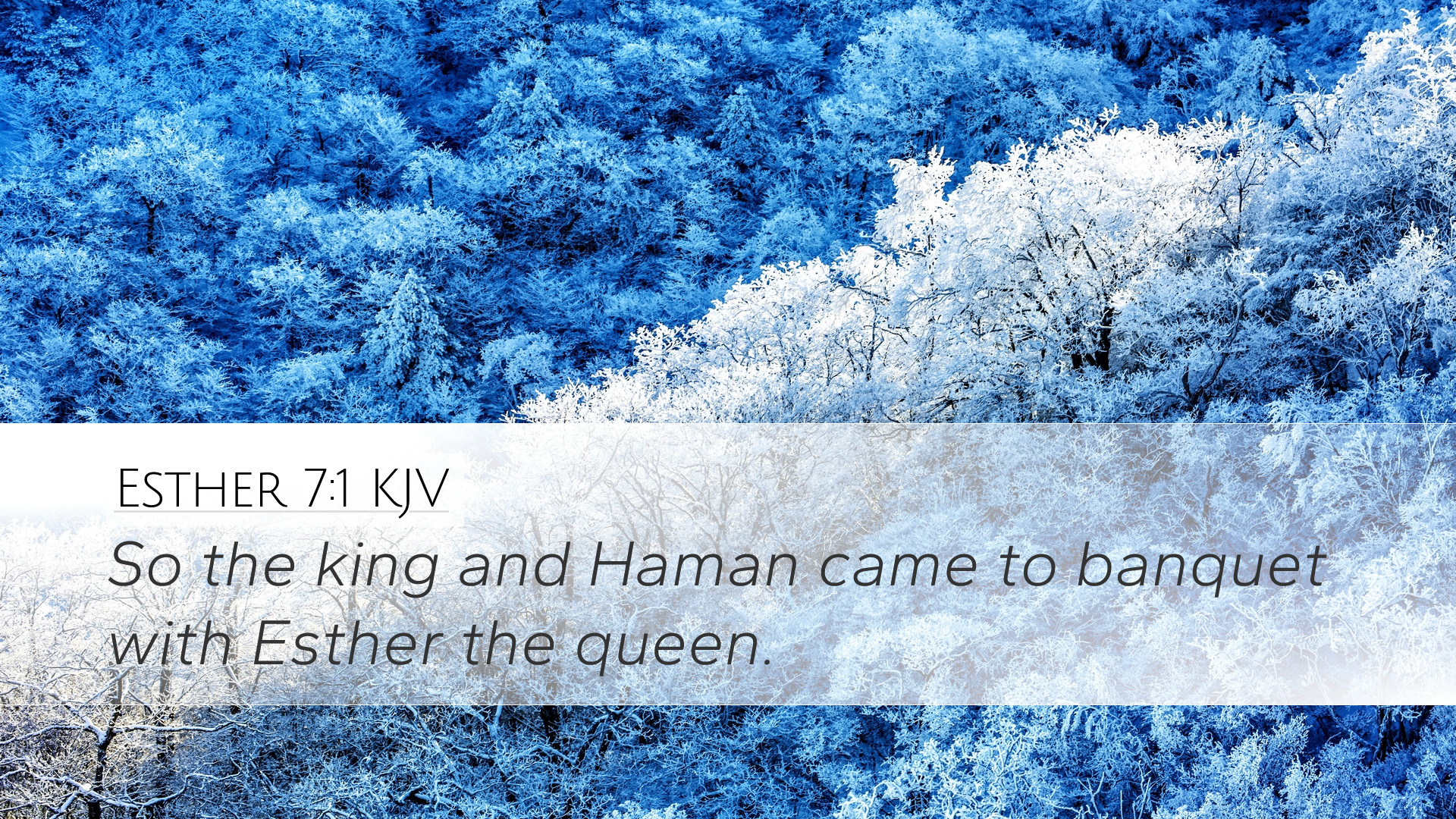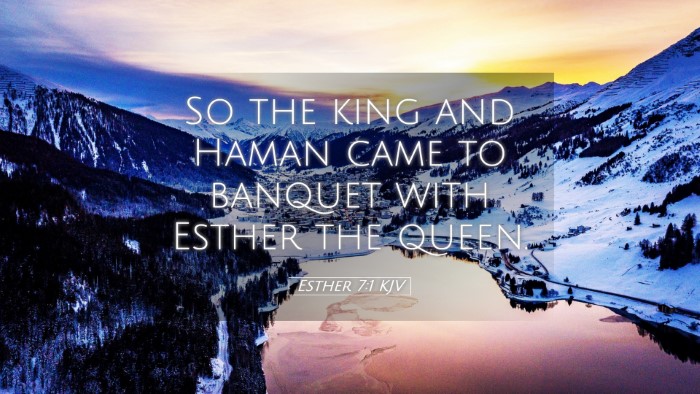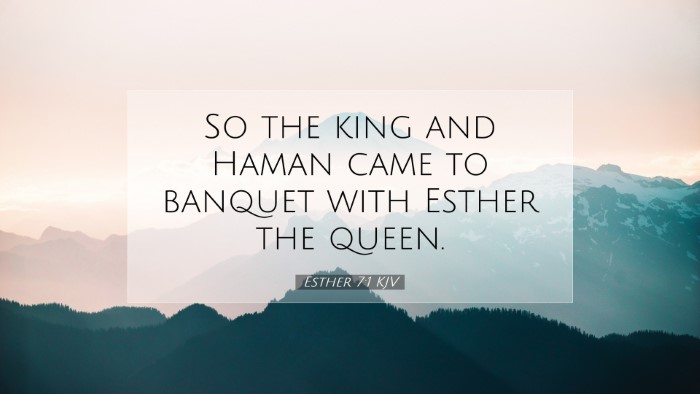Old Testament
Genesis Exodus Leviticus Numbers Deuteronomy Joshua Judges Ruth 1 Samuel 2 Samuel 1 Kings 2 Kings 1 Chronicles 2 Chronicles Ezra Nehemiah Esther Job Psalms Proverbs Ecclesiastes Song of Solomon Isaiah Jeremiah Lamentations Ezekiel Daniel Hosea Joel Amos Obadiah Jonah Micah Nahum Habakkuk Zephaniah Haggai Zechariah MalachiEsther 7:1
Esther 7:1 KJV
So the king and Haman came to banquet with Esther the queen.
Esther 7:1 Bible Commentary
Commentary on Esther 7:1
Esther 7:1 states:
"So the king and Haman went in to feast with queen Esther."
Contextual Background
The Book of Esther is set within the historical context of the Persian Empire during the reign of King Ahasuerus (Xerxes). The narrative unfolds the story of Esther, a Jewish woman who rises to become queen and uses her position to save her people from destruction.
Verse Translation and Key Terms
In this verse, the phrase "the king and Haman went in to feast with queen Esther" signifies a critical juncture in the story. The banquet symbolizes both the social and political dynamics at play, where feasting often represents favor and intimacy but also can carry layers of irony and impending doom.
Key Concepts Explored:
- The Role of Banquet: The feast serves as a crucial setting for revelation and confrontation.
- Esther's Courage: The boldness of Esther is emphasized as she prepares to reveal her Jewish identity and Haman's plot.
- Irony of Presence: Haman, who plotted the destruction of Esther's people, feasts with her, escalating the tension of the narrative.
Commentary Insights
Matthew Henry's Commentary
Matthew Henry notes that this banquet represents not merely social engagement but a divine orchestration where God’s providence is at work. The king's favor towards Haman clarifies Haman’s arrogance and presumptuousness, which will ultimately lead to his downfall. Henry asserts that it is a moment of intense suspense where Esther prepares to unveil her identity and Haman's malevolence.
Albert Barnes' Commentary
Albert Barnes draws attention to the significance of this moment as Esther strategically utilizes the feasts as a platform for action. He points out that the king’s participation indicates a level of trust and affection towards both Esther and Haman. However, the reader is aware of the underlying tension, as Haman's intentions are sinister. Barnes emphasizes the theme of God's providence and the cleverness of Esther in navigating perilous situations.
Adam Clarke's Commentary
Adam Clarke elaborates on the significance of Esther’s invitation and the implications of Haman’s presence. Clarke observes that the banquet scene foreshadows Haman’s impending judgment and the reversal of fortunes for the Jewish people. He underscores Esther's strategic approach, underlining her role not just as a passive figure but as a decisive agent in the unfolding narrative. The emphasis on the intimate setting of the feast prepares the audience for the dramatic revelation that follows.
Theological Reflections
From a theological standpoint, Esther 7:1 serves as a poignant reminder of the complexity of divine intervention and human agency. The act of feasting brings forth contradictory layers of relationship, deception, and revelation, mirroring the intricate plans of God.
Divine Providence
The attendance of both the king and Haman at Esther’s banquet symbolizes the tension between human actions and divine orchestration. It encourages theological reflection on how God uses even the most dangerous and dire situations to fulfill His purposes, as seen in the larger narrative arc of Esther.
Human Agency
Esther’s strategic bravery is a powerful illustration of faith and action. Her ability to navigate the treacherous political landscape illustrates the call for believers to exercise courage in the face of adversity, prompting reflections on their own roles in God’s unfolding story.
Conclusion
Esther 7:1 encapsulates a moment rich with tension and dramatic irony. It serves as a critical turning point where the feasting signals both intimacy and impending revelation. The insights gleaned from public domain commentaries illuminate the profound themes of divine providence, human courage, and the intricate play of relationships within the narrative of Esther. For pastors, theologians, and students, this verse and its analysis prompt both reflection and action in the pursuit of justice and the advocacy for the marginalized.


